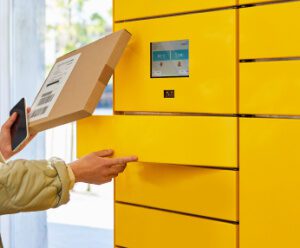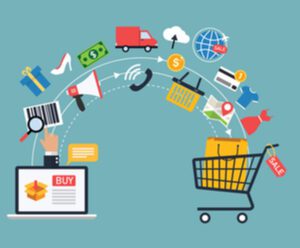
Greener logistics for a booming e-commerce industry

E-commerce is a booming industry, estimated to be worth US$8.8 trillion (€8.18 trillion) in 2024. This is not surprising, given how easy it is to order a new t-shirt or pair of socks with the click of a button.
The ease of e-commerce is so attractive that consumers cannot live without it. Despite the many perks of e-commerce, such as convenience and affordability, online shopping may not be as friendly to the environment.
The environmental challenges of sustainable online shopping
Consumers have already come to expect door-to-door delivery of goods, a hallmark of e-commerce. In 2020, the delivery of goods from seller to consumer due to e-commerce generated 37 percent of the total greenhouse gas globally.
On the packaging front, retailers on e-commerce platforms use materials like paper and plastic for packaging. To supply its expanding e-commerce market, China alone consumes 9 million tons of paper, approximately 216 million trees, each year. Such high volumes of paper usage are the source of mass deforestation, which impacts greenhouse gas production. Furthermore, 1.8 million tons of plastic, a common pollutant when not disposed of properly, are used on average each year.
Sustainable packaging is often suggested as a solution to reduce the environmental impact of e-commerce. Although a good idea, green packaging adds to the cost, making it a stumbling block for smaller companies. A large proportion of e-commerce sellers are individuals who sell out of their own homes rather than institutionalized businesses. These sellers would be unlikely to change their current mode of operations, especially if it incurred a higher cost which would have to be passed down to their customers.
Small changes for a big impact
Despite these obstacles, there is a solution. Green logistics, which refers to operating in a manner that will minimize the environmental impact of logistics, could be a key solution to greening e-commerce.
One way to green the industry is for e-commerce sellers to reuse materials for packaging. The online shopping platform Lazada is already doing this under its Eco packaging option for goods shipped from its warehouses. This small change is a cheap and simple way to reduce waste, which even out-of-home sellers can adopt, since it also reduces the need for and cost of buying packaging fillers. Additionally, waste materials can be sorted through and recycled.
Parcel lockers are another way to implement green logistics. Placed at strategic locations within a short distance of residential areas, these lockers can be used as local collection points for e-commerce goods. Instead of multiple trips to customers' doorsteps to deliver packages, couriers travel to only one location, thus significantly reducing emissions produced by their vehicles. According to researchers from the Institute of Transport Economics, parcel lockers could help reduce emissions by up to 32 percent, playing a huge part in moving toward a greener supply chain in e-commerce. Sellers can also collaborate with other like-minded sellers in their sustainability efforts. By teaming up, economies of scale for sustainable packaging production and purchasing can be achieved, reducing the cost of switching to a greener form of packaging.
Companies can also look for delivery companies that are committed to green logistics and practice carbon insetting, which is when businesses invest in sustainable projects and practices to green their supply chain. For example, some delivery companies, including DHL, use Sustainable Aviation Fuel, which reduces carbon emissions by up to 80 percent. The book and claim model is another way to green the supply chain, where companies ‘book’ a quantity of sustainable fuel from suppliers by purchasing it, and ‘claim’ the emissions reduction toward their sustainability targets.
Finding more sustainable ways to enable e-commerce is crucial to moving the world towards its net-zero targets. Whether through collaboration or reusing materials, there are many ways to implement green logistics in e-commerce, and doing so is critical to steer the industry toward a cleaner and more sustainable future.
ALSO WORTH READING

















 English
English